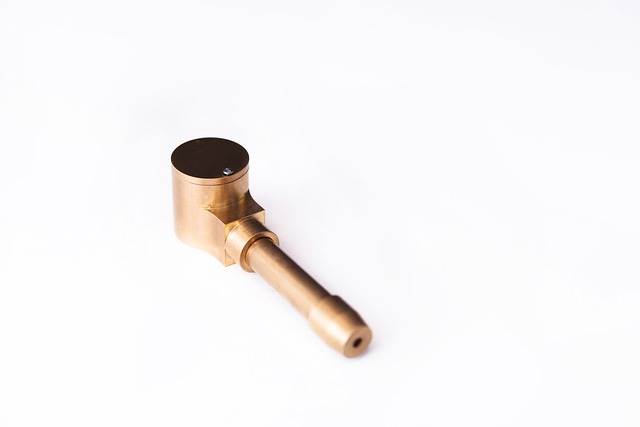Pipe corrosion, a significant plumbing issue, is caused by an electrochemical process accelerated by water constituents like oxygen and chlorine, leading to rust formation and subsequent pipe degradation. Common causes include exposure to acidic/alkaline substances, high moisture, inadequate venting, and chloride-rich water. Understanding these factors is crucial for homeowners and property managers to implement preventive measures, such as regular inspection, corrosion-resistant materials, proper drainage, and controlled water pressure, to avoid costly repairs and extend pipe lifespan by tackling the Common Causes of Pipe Corrosion.
“Uncovering the Hidden Enemy: Unraveling the Common Causes of Pipe Corrosion. Your plumbing system, vital to daily life, faces a silent menace—corrosion. This insidious process eats away at pipes, leading to costly repairs and disruptions. In this comprehensive guide, we demystify pipe corrosion, exploring its basic mechanics and identifying the primary culprits behind it. By understanding these common causes, you’ll gain valuable insights into preventing and mitigating this widespread issue, ensuring a more durable plumbing network.”
- Understanding Pipe Corrosion: The Basic Mechanics
- Common Causes of Pipe Corrosion: A Detailed Look
- Prevention and Mitigation Strategies for Pipe Corrosion
Understanding Pipe Corrosion: The Basic Mechanics

Pipe corrosion is a prevalent issue that can affect any plumbing system, regardless of its size or age. Understanding what causes it and how it progresses is essential for maintaining your home’s or business’s water lines. At its core, pipe corrosion involves an electrochemical process where certain substances in water (like oxygen and chlorine) interact with the metal pipes, leading to their degradation over time.
The basic mechanics begin with the formation of a thin layer on the pipe’s surface, often appearing as rust. This initial layer sets off a chain reaction, acting as a catalyst for further corrosion. Common causes include exposure to acidic or alkaline substances, high moisture levels, poor venting in pipes, and water with elevated levels of chloride ions. These factors create an environment conducive to corrosion, ultimately leading to pipe failure if left unchecked.
Common Causes of Pipe Corrosion: A Detailed Look

Pipe corrosion is a common plumbing issue that can lead to significant damage if left unattended. Understanding the common causes of pipe corrosion is essential for homeowners and property managers to prevent costly repairs. One of the primary factors contributing to pipe corrosion is water quality. Hard water, rich in minerals like calcium and magnesium, accelerates corrosion by creating an environment conducive to metal deterioration. Over time, these minerals can build up on pipes, forming a protective layer that encourages corrosion.
Another major cause is material composition. Different metals have varying resistance to corrosion. For instance, copper pipes are more susceptible to corrosion when in contact with certain chemicals present in water, such as chlorine. Similarly, steel pipes without proper coating or galvanization are highly prone to rusting and degradation. Exposure to corrosive substances like acids or alkalis from cleaning products or industrial waste can also severely damage pipes. Additionally, environmental factors like moisture, temperature fluctuations, and ultraviolet radiation play a role in accelerating pipe corrosion.
Prevention and Mitigation Strategies for Pipe Corrosion

Pipe corrosion is a significant concern for homeowners and plumbing professionals alike, as it can lead to costly repairs and disruptions in water supply. Understanding the common causes of pipe corrosion is the first step towards prevention. The most frequent culprits include exposure to corrosive substances like salt water, acidic or alkaline chemicals, and even certain types of bacteria. These elements can weaken pipe materials over time, accelerating corrosion processes.
Fortunately, there are several effective strategies to prevent and mitigate pipe corrosion. One of the most crucial is regular inspection and maintenance. Identifying corroded areas early on allows for targeted repairs before damage spreads. Additionally, using corrosion-resistant materials during installation or replacing older pipes can significantly extend their lifespan. Proper drainage systems and minimizing water pressure are also essential in reducing corrosion stress on pipes.
Pipe corrosion is a pervasive issue that can significantly impact plumbing systems. By understanding the basic mechanics, identifying common causes like water quality, material types, and environmental factors, and implementing preventive strategies such as regular maintenance, appropriate material selection, and corrosion-inhibiting treatments, homeowners and professionals can protect their plumbing from destructive corrosion. Addressing these issues proactivelly is key to ensuring the longevity and efficiency of your plumbing infrastructure.
